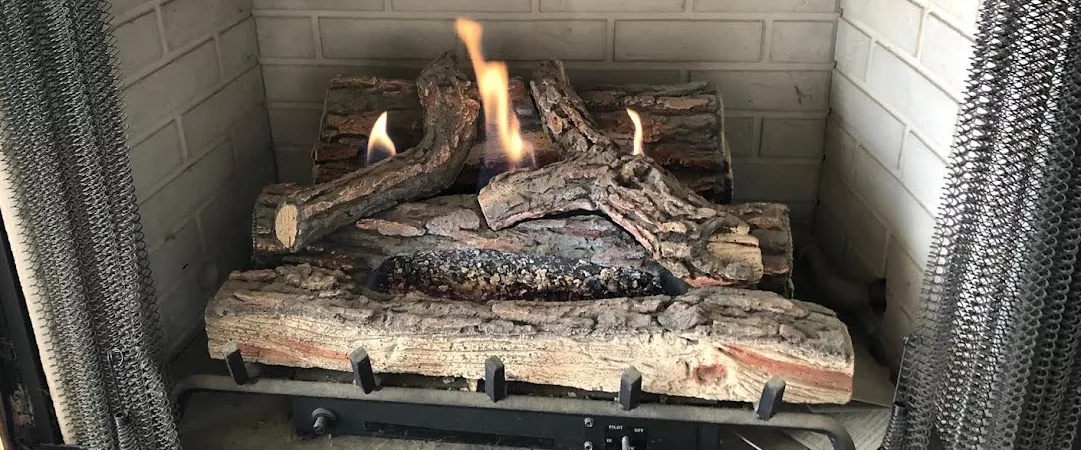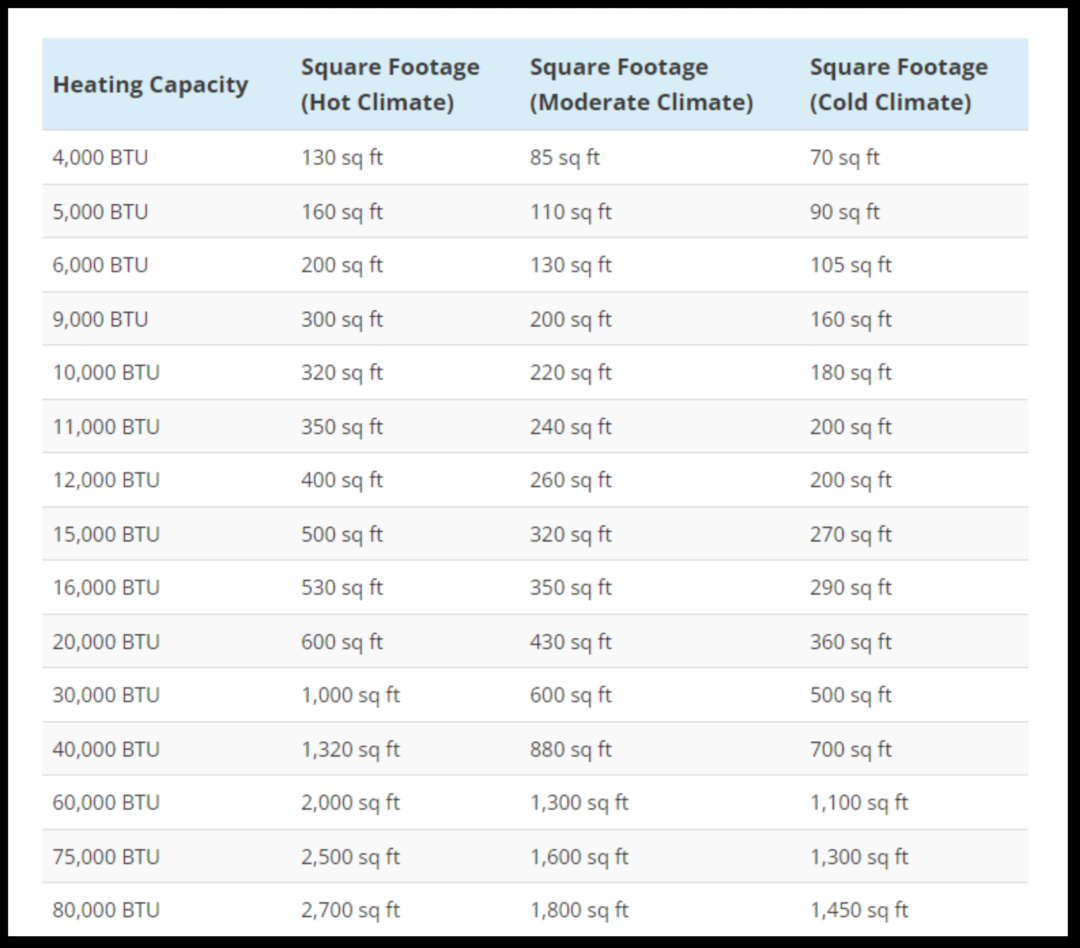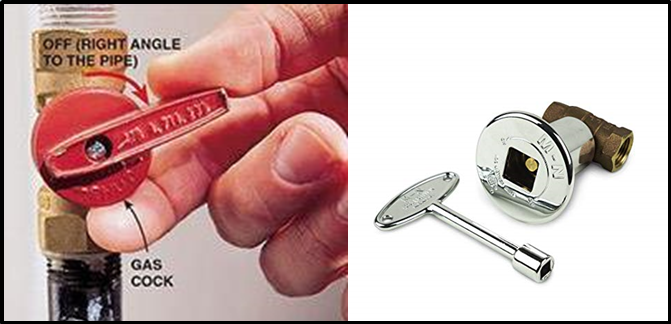
Estimated reading time: 6 minutes
This week I inspected a home with a vent-free fireplace. They’re common in Central Mississippi.
After lighting the log set, my nose picked up a distinct odor. It smelled like a mix of burning dust and a kerosene lamp. The seller had three dogs and two cats – all inside/outside pets.
If you’re having trouble lighting your gas log set or once it’s burning, you smell an odor – it may be dust, dirt, pet hair, or/and airborne particulate. It could also be the quality of the appliance or the log set’s fuel type.
Keep in mind that this discussion DOES NOT apply to vented gas logs. Vented gas logs are burned in wood-burning fireplaces with the damper fully open, and the smell that is produced goes up the flue. So unless you have a poorly drafted fireplace, you will not have the odor described below.
Fireplace Odor
Here’s my short list of things that have the potential to cause a vent-free gas appliance to produce an odor.
- Smoking in the house
- New Paint
- Recently Stained Wood
- Scented Sprays
- Cleaning Chemicals
- Formaldehyde Coming From New Carpets, Drapes, or Furniture
- Scented Candles
- Glade Plugins
- Extreme Dust
- Pet Hair
- Improper air/fuel mixture due to household dust (service the system)
- Impurities in the air can produce an odor (see how to clean the unit – below)

A vent-free appliance requires room air drawn through tiny ports near the burner. When the air gets mixed with “dirty air,” it can smell like a petroleum-based product. During my inspection, the kerosene-type odor was most likely due to a dirty log set and could have been a combo of one or more from the above list.
BEWARE: Your fireplace should never smell like a gas leak. If you smell gas, turn the gas off, leave the building, and call the gas company.
If you see soot accumulating on your logs, then you can assume that carbon monoxide is also being produced.
Greg Tillotson – Gas Log Expert
Ventless logs produce an unmistakable odor, some more so than others depending on the brand’s quality. There is no way of preventing this; it is simply the nature of burning gas in your home without exhausting the fumes up a chimney.
In a perfect world, the natural byproduct of burning “pure” natural gas is water vapor and carbon dioxide, neither of which have an odor. Gas is never 100% pure, so we end up with other byproducts. READ MORE
Cleaning Your Vent-Free Fireplace Logs
Time needed: 15 minutes
We know that ventless logs have an odor, but dirt and debris can make it worse. Here are the steps to service your log set. This tip can also apply to vent free wall heaters as well.
- What you’ll need.
Grab a face mask, a vacuum, a can of compressed air, and a damp dust rag. It’s best to have the log set installation manual or identification tags if you have trouble resetting the logs. Record the model and serial numbers for the log set in case you need to find a digital copy of the manual.
- Prep Work
Turn off the gas feeding the log set. Find the shut-off valve and turn the handle to the off position. Using your smartphone take a picture of the log’s configuration. Remove the logs and set them aside – take as many pictures as you need.

- Remove Dust and Debris From the Pilot Assembly
Using the can of compressed air, clean this hole from the pilot assembly.

- Clean the Main Burner Assembly
Let’s clean the dust from the air intake going into the main burner(s) shown below (the assembly varies by model). To locate the intake, follow the gas tube supplying the burner. Blow compressed air through all the burner port holes.

- Finish
While you have the logs off, vacuum dust and debris from the firebox and surrounding area, and use the damp cloth to remove dust from all burner assembly parts. Don’t forget to wipe the logs down/remove all the dust, and include the retractable screen (if your model has one).
Using your photo guide or the drawing in the manual, properly align and reinstall the log set over the burners. Turn on the gas.
Follow the typical lighting procedures to light the vent-free logs.
Grab a cup of coffee or hot chocolate. Enjoy!

“Other” Vent Free Fireplace Information
Vent-free wall heaters should be sized to fit the area where they are installed and must meet any additional regional or local requirements. Generally speaking – 6,000 BTU units are allowed in bathrooms, and 10,000 BTU units are allowed in bedrooms.

Vent-free gas appliances should be used as supplemental zone heaters and not as a primary heat source – except for short periods – for example, during a power outage.
THIS GUY HATES THEM – READ WHY: Dr. Allison Bailes wouldn’t have a ventless fireplace in his home, and he suggests that if you have one – you don’t turn your vent-free fireplace on…ever! “They produce a significant amount of water vapor that gets dumped into your house, and that’s not good for indoor air quality.” Dr. Bailes also calls Bob Vila out for promoting ventless fireplaces and has plenty more to say in this article.
And he shares this link: Letters From Vent Free Fireplace Owners.
Last Word: Vent-free appliances, like all gas appliances, should be inspected annually for proper operation by a qualified service agency. This typically consists of cleaning, checking the burner, and inspecting the appliance’s other vital components and ignition system(s).
My tips above are for informational purposes. Contact a professional if you have any questions. In Central Mississippi, get your vent-free and vented fireplaces from Builders Specialties.
Photo Source: https://www.finesgas.com/




- - - - - - - - - - - - - - - - - - - - -